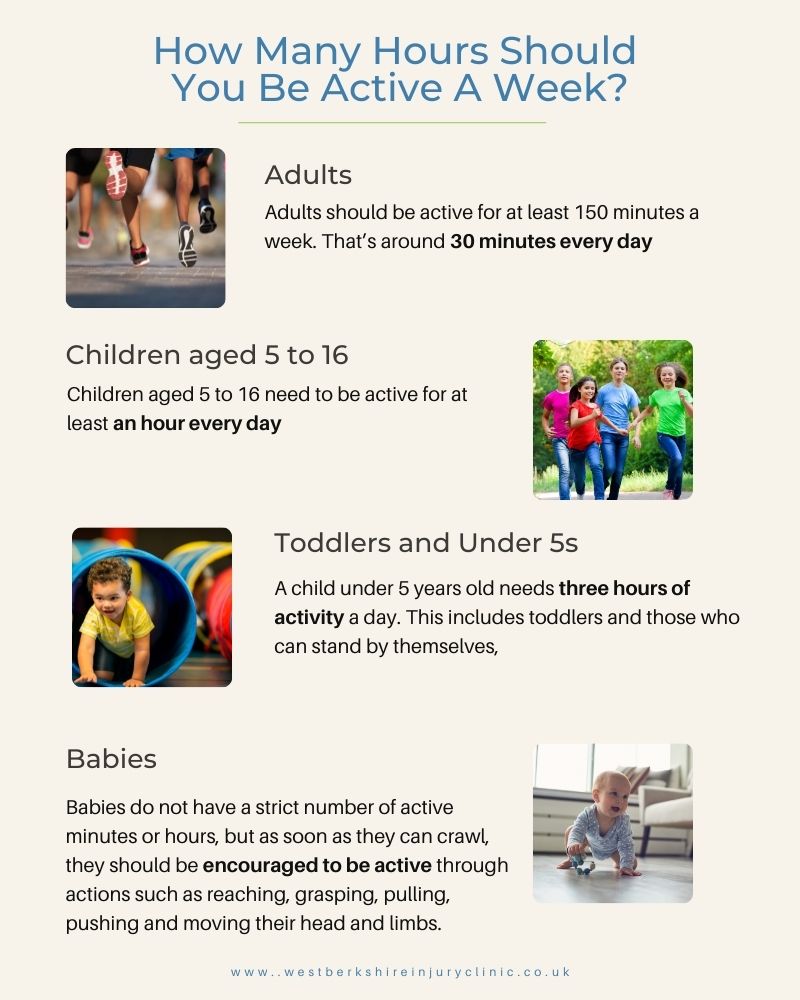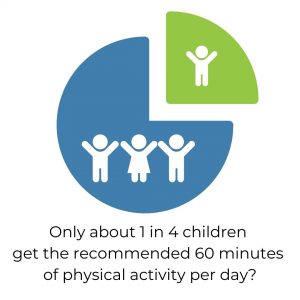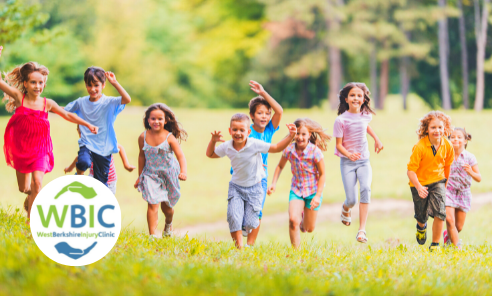Physical activity is great for kids along with health nutrition, mental wellbeing, and encouraging good citizenship and social habits. Parents or guardians and wider family can play a large part in encouraging children to explore and make good exercise choices for themselves as they age.
Being physically active also helps build strong bones, muscles and joints. Additionally it reduces risk of obesity and illnesses like diabetes or cardiovascular disease. It can help with mental wellbeing, sleep, behaviour, and fosters friendships and teamwork especially in organised sports. And will also help promote positive lifelong habits and all the benefits that go with that.
It can be any activity, free play, sport, dance or anything that means moving enough to be short of breath, feel warm, and sweat.
How Many Hours Should You Be Active For?
Here are recommendations for different age groups:


Did You Know
Did you know that only about 1 in 4 children get the recommended 60 minutes of physical activity per day?
Participation in all types of physical activity drops dramatically as a child’s age and grade in school increase. It’s important that physical activity be a regular part of family life.
The Benefits Of Physical Activity For Kids
Being physically active means moving enough to breathe heavily, be short of breath, feel warm, and sweat. Moreover exercise is vital to the health and well-being of children. Physical activity helps build and maintains healthy bones, muscles, and joints, for example. It can help keep a healthy body mass index and reduce the risk of diabetes, high blood pressure, and heart disease later in life. It can help children fall asleep quickly and sleep well.
Beyond benefits to the body, physical activity also boosts a child’s mental and behavioral health.
– Increasing a child’s enthusiasm and optimism and boosts self-esteem, school performance, attention and behavior.
– Reducing anxiety, tension and depression.
– Fostering teamwork and friendship when it’s part of an organized sport.
Awesome Ways To Get Your Kids Active
- The main thing to establish good habits is to start early. Participation drops dramatically with age and increasing school year groups.
- Emphasize fun. Help your child find a sport or activity that they enjoy. The more enjoyment, the more likely they will continue with it. Get the entire family involved. It is a great way to spend time together.
- Be a role model. Children who regularly see their parents enjoying sports and physical activity are more likely to do so themselves.
- Be creative and find excuses to be active, even if it’s a walk or cycle to school, the shops, around the block, to the park or local woods. Explore, climb trees, visit something interesting locally. Maybe ask for help around the house or garden.
- Provide active toys, especially for young children. Provide balls, jump ropes, and other simple and inexpensive active toys. Maybe things like rollerblades, skateboard or basketball hoop. If stuck indoors and on games consoles, find active ones like Wii Ring Fit. Or try free Apps like Change4Life’s Fun Generator for ideas.
- Make time for exercise and plan ahead if needed. Some children are so overscheduled with homework, music lessons, and other planned activities that they do not have time for exercise. Also, limit screen time, including time spent on TV, videos, computers, and video games, each day. Use the free time for more physical activities. The easy option is to plonk kids in front of a screen. Get them active or outside.
- Safety. Activities need to also be age and physically appropriate, and safe for their personal and medical circumstances and the environment they are in. Check with your GP or sports medicine professional if unsure. And if leaving them with someone, ensure they will be safely looked after.
- We also need to ensure the other extreme of too much activity and increasing their injury risk. Variety of sports and activities are better for overall development and a more positive outlook to sport and exercise in later life, as well as lowering injury risk as they grow and mature. Early sport specialisation and intense training are more likely to result in injury or mental burn out and needs more monitoring.
If you need any advice on child or adolescent injuries, please get in contact.

